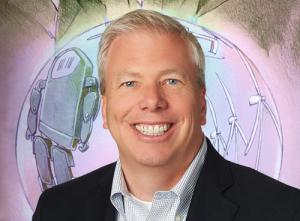Guidehouse
David O’Brien is a director in Guidehouse’s global Energy, Sustainability, and Infrastructure segment where he helps clients navigate the energy industry’s transformation. With a focus on strategy and operations, he helps clients develop sustainable business models and establish regulatory frameworks to optimize physical and financial aspects of the changing distribution grid. David has nearly 30 years of experience covering energy policy, regulatory and grid planning, economic development, and business strategy.
What are the major regulatory changes you see in the next decade? What is needed from regulators to optimize outcomes for all stakeholders?

Over the next decade, the regulatory system will need to adapt, and utilities will increasingly act as orchestrators as opposed to classic asset builders. They must innovate in the way they operate and in the solutions they offer customers.
The traditional cost of service, rate case docket style environment will not suffice. We need to focus on how we reward utilities for being orchestrators and how they are provided flexibility to be adaptive to the changing needs of customers. Less hearing room, more customer outcomes.
Solutions will be found in a modern form of performance-based regulation (PBR 2.0). Financial incentives will alter the asset builder business model, as return on utility investment can be merit-driven based on excellence, advancing policy goals, and meeting customer expectations. The regulatory process will be centered around measuring and rewarding outcomes as opposed to litigating inputs.
PBR 2.0 will also entail streamlined and nimble regulatory decision-making to shorten the time to market for new technologies and solutions in concert with customer and societal expectations.
As we saw in the transformation of the telecom industry, a diversity of players will be part of servicing customers. The energy vertical will become more and more of a contested market space.
Regulatory intercept, degree of oversight, and decision-making timeframes will need to narrow. A culture of innovation will need to emerge and flourish, and innovation is a 360-degree effort.
PUF posed a baker's dozen questions about power's future to a similar number of the thought leaders at Guidehouse:
- Dan Hahn — You have a short elevator ride alone with the CEO of a major utility. What would you want to tell him or her?
- Karin Corfee — What major changes have we seen over the last year to the key opportunities and threats utilities are facing? What can utilities do to be better prepared for these changes?
- Erik Larson — Are utilities well-equipped for next generation Energy Cloud business models? What is your view on the industry's readiness? What can utilities do now to be ready?
- Dan Bradley — How will utilities' relationships with their customers change over the next decade? How can utilities get ahead of this?
- Ted Walker — We all hear of "as a service" offerings across many other industries. What does this mean for utilities? What does energy as a service look like?
- Shannon Graham — How are European energy companies positioning themselves in a quickly decarbonizing market? What lessons can be learned from them for U.S. utilities?
- Derek Jones — Approximately one-third of energy use in the U.S. is for transportation. How can utilities tap into this market in a significant way?
- David O'Brien — What are the major regulatory changes you see in the next decade? What is needed from regulators to optimize outcomes for all stakeholders?
- Margot Everett — What are the major changes to how utilities should approach rate design over the next decade to deal with challenging industry dynamics?
- Michelle Fay — What will the utility of the future look like in 2030? How will it be different from today's utility?
- Rick Rodman — How has risk management changed for utilities? What can utilities learn from other industries?
- Jenny Hampton — How can utilities use design thinking to develop game-changing innovations? What lessons can be learned from other industries?
- Danielle Vitoff — What role can utilities take in their customers' quest to decarbonize? How have we seen utilities shifting more decarbonization choices to their clients?


